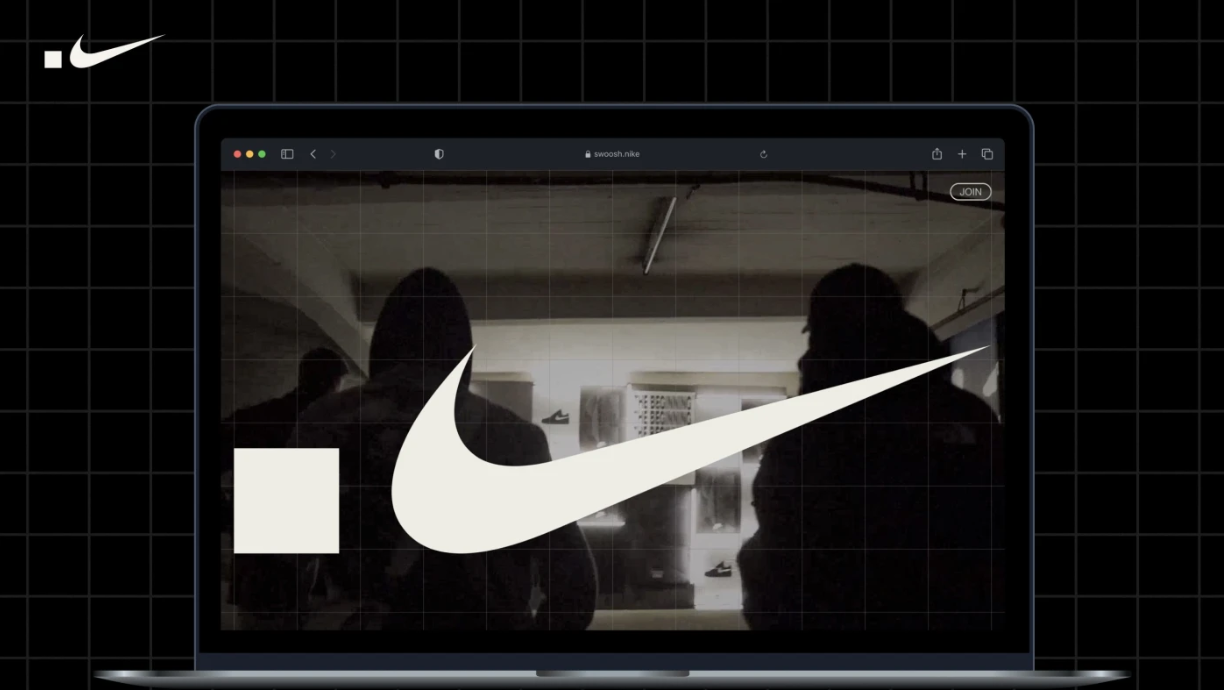Nike is quietly building an industry giant in plain sight.
This week, the iconic footwear brand announced the launch of a new platform, Dot Swoosh, to support its continued up-leveling in the digital and virtual space.
While web3 and NFTs have been slaughtered in the recent bear market, Nike has been steadily building and showing a long term conviction in the power of web3.
If we look back in history, Nike is always first when it comes to innovation. They led the charge with redefining athlete sponsorships back in the day, by not just using them as corporate sponsors, but by elevating them to god-like cultural figures. See: Michael Jordan.
Nike was also early in playing with having a simple web page. When other companies didn’t understand the new technology, Nike was playing with it. The same came be said with YouTube. When it was just considered a place to watch trivial cat videos, Nike dropped its athletes into the mix and created viral sensations that transformed how people thought about the platform and what it can do for a brand. See: Ronaldinho Crossbar Challenge and Kobe Jumps an Aston Martin.
Nike did stumble when the Amazon-ification of the world first rolled out, as they still leaned too heavily on traditional retail and distribution. However with the appointment of CEO John Donahoe, former CEO of PayPal, the company completed a full pivot to a digital offense and its direct to consumer business has started to really drive profits.
Maybe this led to Nike’s early bet on the metaverse.
With the splashy acquisition of RTFKT in 2021, Nike signaled belief in the emerging web3 space. A space that makes a natural fit for Nike with its easy analogs in digital and virtual fashion. They even filed all the right patents for creating virtual footwear, “Cryptokicks”, and entire platforms based around the buying and selling of virtual shoes and apparel.
A big issue at play here, is Nike now has a direct path to tap into the robust sneaker re-selling market. How it used to work was people would buy exclusive kicks from Nike, and then turn around and sell them for three, four, ten times more in high end sneaker shops or online. This is big business. And one that Nike can’t get its claws into. However in a world where every physical sneaker comes with a virtual “twin”, there will effectively be a receipt or proof of ownership for every pair of shoes you buy. Cutting out the cheap knockoff market and adding a layer of authenticity to re-selling.
Imagine if you had proof that you owned the first Air Jordan? Or Air Max 1? This kind of social proof, is exactly what the promise of NFTs is built on. People will find value in the virtual authentic sneakers, just the way they pay 10x for sneakers they never intend to wear, but hold onto for investment purposes. Before today, it was a black market. From today, we can see Nike is intending to build a platform and peer-to-peer marketplace where you can buy, sell and trade those virtual sneakers to others.
This has never been done, and it’s hard for the uninitiated to imagine. But it’s basically the fashion and physical goods equivalent of Steve Jobs pulling out an iPod and saying “music will never be the same.” Only in web3, there is this notion of creator royalties and smart contracts that truly have the potential to level the playing field. If Nike can continue to operate in an open source, web3 ethos, this could be a seriously game changing move.
It potentially gives an individual creator the ability to create a Nike shoe, and sell it for others to use across the metaverse, in popular video games, in Roblox, in Fortnite, in a million other games and services and avatars not invented yet. Nike has enable digital sneakers, digital products to go live and have ownership tying back to the individual creators. Not only Nike will benefit from this. In web3, because of the nature of the smart contracts, the financial incentives are spread out.
No longer will you just be a consumer of shoes or jerseys, you will now be a part owner. It’s like a mix of owning the product and a share of the company. It’s a new behavior that is still undefined, but what Nike is signaling and building is nothing short of revolutionary.
It’s like, if you used Amazon back in the day when it launched, and every time you bought something, you also earned a fractional share of Amazon stock. That’s the promise of web3’s mantra: Read. Write. Own.
And in Nike’s case, for fans of the brand, you might also say Read. Write. Own. Just Do It.
If you are interested in Nike, shoes, fashion, digital or simply the evolution of business, ignore this move at your own peril.
Andrew “Oyl” Miller is an advertising Creative Director and Copywriter. He spent 15 years working at Wieden+Kennedy on brands like Nike, PlayStation and IKEA. You can check out his work on his website.






